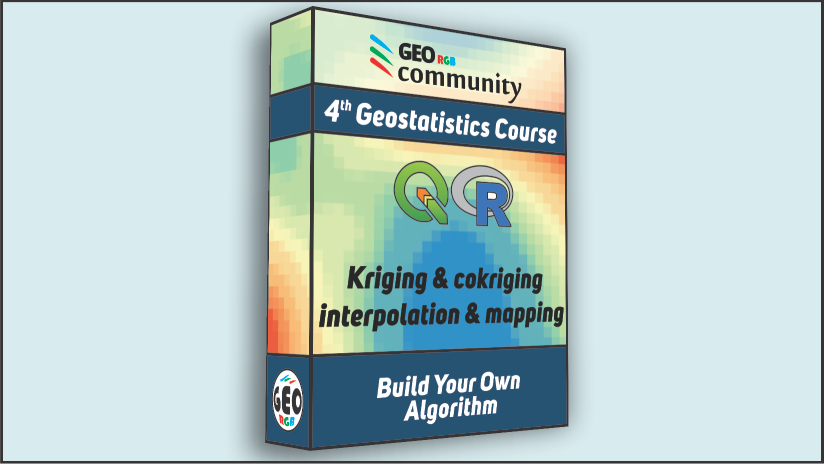
About Course
4th geostatistics course. Interpolation and mapping of Kriging / cokriging.
Introduction
The Fourth geostatistics course. Interpolation and mapping kriging / cokriging is a continuation of the three previous courses related to geostatistics:
- Geostatistics Course for Beginners. Creating algorithms with R for QGIS. Univariate analysis.
- Second geostatistics course. Bivariate analysis with R and QGIS.
- Third geostatistics course. Structural analysis for kriging / cokriging.
The first course was about how to complete a professional univariate analysis using R integrated in QGIS. In this case, that analysis was executed as a part of the exploratory data analysis. In the second course, we were still working on the exploratory data analysis area, but in this case was for the bivariate analysis; however, in the third course we learned how to complete the structural analysis of the data. In fact, this forth course is going to be the culmination of the courses related to R integrated in QGIS. In order to achieve that, we are going to introduce the scripts for a several types of kriging / cokriging interpolation and how to map and present the results of the geostatiscal studies. Also, we are going to ejecute a full geostatistical analysis for the different types of kriging / cokriging.
In this course we are going to work exclusively with real data, in a real examples. In addition, all the lessons are going to be practical exercises without theory, using R integrated in QGIS.
Course objectives
The goal of this fourth couse is to provide a global view of geostatistical analysis for kriging / cokriging interpolation and how to present the results in a map. To reach this objective we are going to complete a full geostatistical analysis based in the following types of kriging:
- Ordinary kriging
- Universal kriging
- Regression kriging
- Kriging with external drift
- Ordinary cokriging
Course requisites
It is fundamental to have knowledge related to univariate, bivariate and structural analysis before to take the Fourth geostatistics course. Interpolation and mapping kriging / cokriging.
From GeoRGB Community, we hardly recommend to take the two previous courses before to start the fourth one.
Link for the first course:
Link for the second course:
https://giscourse.online/courses/second-geostatistics-course-bivariate-analysis-with-r-and-qgis/
Link to the third course:
Course achievements
Once finished the Fourth geostatistics course. Interpolation and mapping kriging / cokriging you will get an intermediate level of geostatistical analysis based in kriging / cokriging. As a result, you will be ready to apply the things you learned in real projects and present the results in a map using QGIS. Also, you will get knowdlege enough to create new scripts with R to be integrate din QGIS.
Course recommendation
In addition to the requested courses, we recommend to take the following courses / tutorials to have a better understanding on geostatistics. Also, you will gain some experience using QGIS. With this in mind, consider to follow the links below:
Course Content
Lesson 0
-
Introduction to the 4th Geostatistics course
14:32


